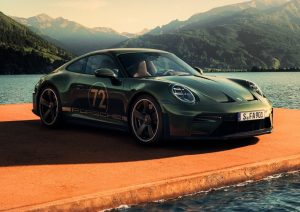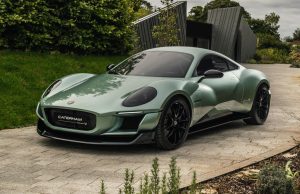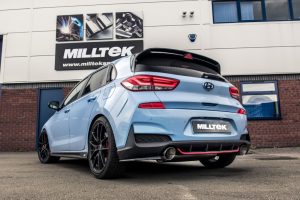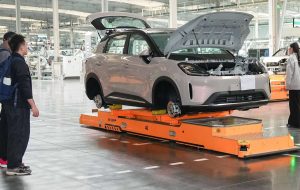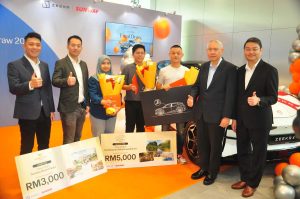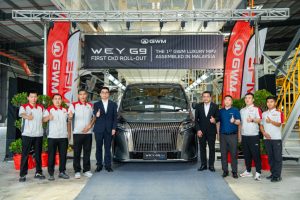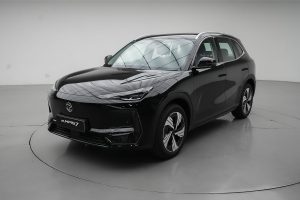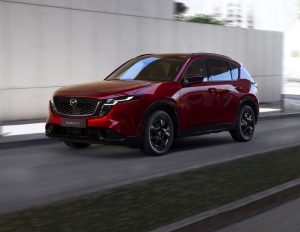Multi-purpose vehicles (MPVs) come in all shapes, sizes and pricing to suit different budgets.
There’s a good selection from under RM100,000 and up.
If your appetite to spend is more elastic, there are better ones up the hierarchy that add more creature comforts and luxuries for life on the road.
In the case of the Nissan Serena S-Hybrid, it aims to strike a balance, offering some premium features while staying affordably priced.
The locally assembled model comes in two variants: Highway Star and Premium Highway Star, priced at RM149,888 and RM162,888 respectively.

The test unit was the latter.
The Serena has seen some changes in its fifth-generation refreshing exercise. Much of it are visual updates while others are more behind-the-scenes on the safety front.
Heading the list of updates in the three-row, seven-seat MPV is a new V-motion front grille with a distinctive chrome pattern that makes it look more aggressive.
In addition, there’s a redesigned dual projector LED headlamps, and a new front bumper with integrated fog lamps and daytime running lights.

The rear gets newly designed LED tail lights and a bumper painted in gloss black.
The black roof-grey body combo complements the design and make the MPV look stealthy.
Soundproofing liners have been added to the rear wheel housing to control noise, vibration and harshness (NVH) levels and deliver a quieter experience.
Nissan has upped the safety of the Serena encasing it in a “safety bubble” when on the move.
It now comes with a 360-degree “Safety Shield” package featuring intelligent predictive forward collision warning and intelligent forward emergency braking, lane departure warning, blind spot warning and rear cross traffic alert.

Enhancing the driver’s awareness of the surroundings is the around view monitor that is able to detect moving objects.
All important features at a time when there are more vehicles on the road and the need to guard against reckless riding and driving by other motorists cannot be overstated.
The useful dual back door and hands-free dual power sliding doors features continue on in the facelift.
The 16-inch wheels are now blacked-out for a sportier appearance. They could be swapped out for 18-inchers for better aesthetics.
Inside the cabin, the Premium Highway Star now gets quilted Nappa leather in either brown or black, stepping up its premium appearance at once.

The recessed instrument looks stylish and both the infotainment touchscreen and mid-mounted ceiling monitor have grown in size to 9-inch and 11.6-inch respectively. The head unit supports Apple CarPlay and Android Auto connectivity.
Plenty of cubby holes, seven USB ports and versatile seat configurations add to cabin practicality.
The floor is flat so one could walk from the front to the back in the mid-aisle — when the MPV is stationary, of course.
But hard plastic on the dashboard and doors continue to dominate and the key fob looks more at home in a cheaper car.
The Serena still uses a foot-operated parking brake instead of the electric type and the pedal can sometimes rub against the left foot, which is annoying to say the least.

In addition, the two Captain seats get airline-style trays that are also plasticky.
We would have liked the armrests to be broader to provide better arm support but that would have raised production cost that would be passed to the customer.
The powertrain remains unchanged. Motivating the new Serena is a 2.0-litre Twin CVTC (Continuously-variable Valve Timing Control) 4-cylinder unit that delivers 148hp and 200Nm of torque.
The drivetrain also incorporates an Energy Control (ECO) electric motor, which controls the idle-stop system and provides torque assistance on moving off.

The setup allows for greater fuel efficiency and is cheaper to produce and maintain compared to a full hybrid system.
Nissan claims the Serena has a fuel consumption of 14.2km per litre and can travel up to 852km on a tankful.
Real-world figures will be lower subject to driving style, air-condition load, number of passsengers and other factors. We averaged 9.2, which was within expectations.
The large expanse of glass all-around means great visibility and is akin to driving a bus with nothing between you and the outside world except a piece of glassware.

The so-called zero gravity seats for first two rows are certainly comfortable and relaxing to sit on.
So too are the third row seats if MPV occupancy is kept to six instead of full load. The air-conditioning reaches all the way to the rear with each row having vents to pipe cold air through.
As a people carrier, the Serena will happily cruise along on the highway with the pliant suspension soaking up road corrugations.
However, the MPV doesn’t like to be pushed hard.
The engine and CVT get noisy on hard acceleration but purr along sweetly once it gets up to highway speeds.

Common sense will dictate that one shouldn’t shove this tall boxy vehicle hard into a corner as body lean is noticeable but controllable.
The slab-sided Serena was a good looking workhorse before and looks even better in the latest form.
It’s roomy, comfortable, and has credible fuel efficiency.
Coupled with a raft of safety upgrades and an attractive price, the new Serena makes for an MPV that’s worthy of consideration if you can accept some of the trade-offs.
SPECIFICATIONS
Nissan Serena S-Hybrid
Engine: 1,997cc DOHC with Ywin CVTC, 4-cylinder, petrol
Maximum power: 148hp at 6,000 rpm
Maximum torque: 200Nm from 4,400rpm
Transmission: Continuously Variable Transmission and Adaptive Shift Control
Features: 6 airbags, Energy Control (ECO) Motor with Electric Power Regenerator &
Secondary Battery, Idling Start / Stop System, Torque Assist, Nissan Intelligent Mobility, ABS, Hill Start Assist, Vehicle Dynamic Control, Automatic LED Projector with Auto Leveling & LED Signature Lamps, front & rear foglamps, 9-inch infotainment screen, Dual Zone Auto Climate Control, Quilted Nappa Leather seats, leather wrapped steering wheel, dual channel dashcam, Hands-Free Dual Power Sliding Doors, ISOFIX Child Seat Restraint System (for second row seats)
Suspension: McPherson Strut (front), Torsion Beam Axle (rear)
Fuel consumption (official): 7.04l /100km
Price: (OTR without insurance): RM162,888













































